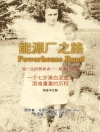‘A book of rare power and beauty, majestic in its structure, filled with the truth of imagination and the truth of actuality, emphatic in its declarations and noble in its reach.’—Bayard Boyesen, Mother Earth.
‘No other book discusses so frankly the criminal ways of the closed prison society.’— Kenneth Rexroth
In 1892, Alexander Berkman tried to assassinate Henry Clay Frick for the latter’s role in violently suppressing the Homestead Steel Strike. Berkman’s attempt was unsuccessful. Berkman spent the next fourteen years in Pennsylvania’s Western Penitentiary. Upon release, he wrote what was to become a classic of prison literature, and a profound testament to human courage in the face of oppression.
This new edition of his account of those years is introduced and fully annotated by Barry Pateman and Jessica Moran, both former associate editors of the Emma Goldman Papers at the University of California Berkeley. Their efforts make this the definitive version of Berkman’s tale of his transformation within prison, his growing sympathy for those he’d considered social parasites, and the intimate relationships he developed with them. Also includes never-before-published facsimile reprints and transcriptions of the diary Berkman kept while he wrote this book, conveying the difficulties he had reliving his experiences.
Alexander Berkman (1870–1936) was a leading writer and militant in the anarchist movement and author of the classic primer What is Anarchism?
Barry Pateman was associate editor of Emma Goldman: A Documentary History, and editor of Chomsky on Anarchism. He is a historian and member of the Kate Sharpley Library collective.
Jessica Moran, was an assistant editor of Emma Goldman: A Documentary History. She is a member of the Kate Sharpley Library collective and is an archivist currently living and working in New Zealand.
Table des matières
Introduction, by Jessica Moran and Barry Pateman
Part I The Awakening and Its Toll
Chapter 1. The Call of the Homestead
Chapter 2. The Seat of War
Chapter 3. The Spirit of Pittsburgh
Chapter 4. The Attentat
Chapter 5. The Third Degree
Chapter 6. The Jail
Chapter 7: The Trial
Part II The Penitentiary
Chapter 1. Desperate Thoughts
Chapter 2. The Will to Live
Chapter 3. Spectral Silence
Chapter 4. A Ray of Light
Chapter 5. The Shop
Chapter 6. My First Letter
Chapter 7. Wingie
Chapter 8. To the Girl
Chapter 9. Persection
Chapter 10. The Yegg
Chapter 11: The Route Sub Rosa
Chapter 12. Zuchthausblothen
Chapter 13: The Judas
Chapter 14. The Dip
Chapter 15. The Urge of Sex
Chapter 16. The Warden’s Threat
Chapter 17. The “Basket” Cell
Chapter 18. The Solitary
Chapter 19. Memory — Guests
Chapter 20. A Day in the Cell-House
Chapter 21. The Deeds of the Good to the Evil
Chapter 22. The Grist of the Prison-Mill
Chapter 23. The Scales of Justice
Chapter 24. Thoughts That Stole Out of Prison
Chapter 25. How Shall the Depths Cry?
Chapter 26. Hiding the Evidence
Chapter 27. Love’s Dungeon Flower
Chapter 28. For Safety
Chapter 29. Dreams of Freedom
Chapter 30. Whitewashed Again
Chapter 31. “And By All Forgot, We Rot and Rot”
Chapter 32. The Deviousness of Reform Law Applied
Chapter 33. The Tunnel
Chapter 34. The Death of Dick
Chapter 35. An Alliance with the Birds
Chapter 36. The Underground
Chapter 37. Anxious Days
Chapter 38. “How Men Their Brothers Maim”
Chapter 39. A New Plan of Escape
Chapter 40. Done to Death
Chapter 41. THe Shock at Buffalo
Chapter 42. Marred Lives
Chapter 43. “Passing the Love of a Woman”
Chapter 44. Love’s Daring
Chapter 45. The Bloom of “The Barren Staff”
Chapter 46. A Child’s Heart-Hunger
Chapter 47. Chum
Chapter 48. Last Days
Part III The Workhouse
Part IV The Resurrection
Appendix: Berkman’s Diary
Index
A propos de l’auteur
Alexander Berkman: Alexander Berkman was a leading writer and participant in the 20th century Anarchist movement. The young, idealistic Berkman practiced ‘propaganda by deed’ attempting to assassinate Henry Clay Frick during the Homestead Steel Strike of 1892. While imprisoned, he wrote the classic tale of prison life Prison Memoirs of and Anarchist. After his release, Berkman edited Emma Goldman’s Mother Earth and his own paper The Blast!. Deported from New York City to his native Russia in 1919, were he saw first hand the failure of the Bolshevik revolution and dedicated himself to writing the classic primer on Anarchism, What is Anarchism?.Barry Pateman was associate editor of Emma Goldman: A Documentary History, and editor of Chomsky on Anarchism. He is a historian and member of the Kate Sharpley Library collective.Jessica Moran, was an assistant editor of Emma Goldman: A Documentary History. She is a member of the Kate Sharpley Library collective and is an archivist currently living and working in New Zealand.












